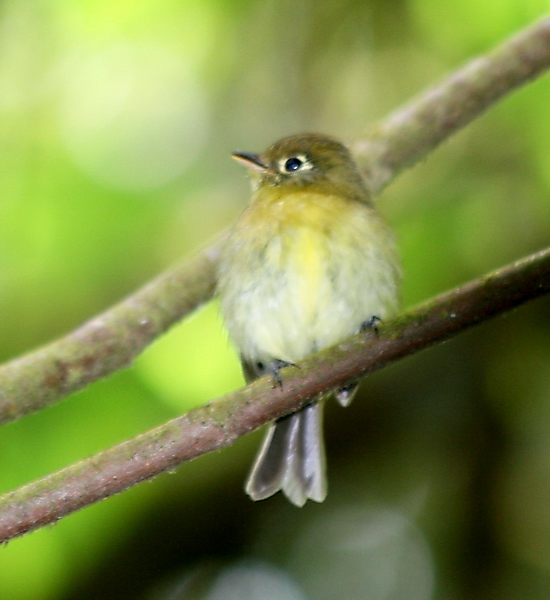- Empidonax flavescens
Identification
Length: 12.5cm (5in); weight: 12g. Adult: sexes similar; greenish-olive above; blackish wings with ochraceous-buff wing-bars; breast ochraceous yellow, fading to yellow in the belly; prominent eye-ring very pale yellow, broader behind the eye as in the Black-capped Flycatcher; upper mandible black, lower orangey; legs are gray. Young: browner above, paler yellow below, with belly almost white; wing-bars are cinnamon-orange. Despite the name, adults are overall a brighter yellow than the Yellow-bellied Flycatcher (Empidonax flaviventris), a migrant flycatcher, which breeds in Canada and extreme NE USA and winters in Central America.
Distribution
Resident from SE Mexico to W Panama.
Taxonomy
The Yellowish Flycatcher belongs to the Genus: Empidonax in the Tyrannidae Family.
Habitat
Cool cloud forests of the mountains, between 800m (2600ft) and 2450m (8000ft). Frequents edges, openings, clearings, shady pastures and second growth.
Behaviour
Sallies forth from a perch to catch insects, gleans them from foliage and bark while hovering, and also drops to the ground for insects and spiders; sometimes eats berries. Usually seen alone outside of the breeding season. Breeds from March to June, building a deep cup of mosses and liverworts, lined with plant fibers and horsehair. The nest is placed 2-4.5m (6-15ft) up, in a crevice in big tree trunks, an earthen bank or cliff. Voice: dawnsong during the breeding season, a seee seee chit, about 20 times per minute; otherwise a thin high-pitched tseeep.




